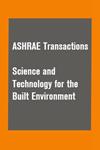暖通空调预测控制的数据分析和可解释机器学习:基于案例研究的实现
IF 1.6
4区 工程技术
Q3 CONSTRUCTION & BUILDING TECHNOLOGY
Science and Technology for the Built Environment
Pub Date : 2023-07-25
DOI:10.1080/23744731.2023.2239081
引用次数: 0
摘要
能源效率和热舒适水平是设计和实施供暖、通风和空调(HVAC)系统时要考虑的关键属性。随着物联网(IoT)设备可用性的提高,现在可以持续监控影响用户热舒适性和系统能效的多个变量,从而先发制人地优化这些因素。为此,本文报道了一个具有双重目的的案例研究;首先,通过数据分析分析常规暖通空调系统的性能;其次,探索可解释机器学习技术在暖通空调预测控制中的应用。提出了一种新的可解释机器学习(IML)算法,称为基于排列特征的频响分析(PF-FRA)。结果表明,该模型可以通过考虑历史温度信息以及额外的环境和时间序列特征来生成准确的室温水平预测。我们提出的模型在1-h和8-h的RT预测中分别达到0.4017°C和0.9417°C的平均绝对误差(MAE)。使用代理模型和Shapley图等工具来解释模型的全局和局部行为,目的是增加对模型的信任。本文章由计算机程序翻译,如有差异,请以英文原文为准。
Data analysis and interpretable machine learning for HVAC predictive control: A case-study based implementation
Energy efficiency and thermal comfort levels are key attributes to be considered in the design and implementation of a Heating, Ventilation and Air Conditioning (HVAC) system. With the increased availability of Internet of Things (IoT) devices, it is now possible to continuously monitor multiple variables that influence a user’s thermal comfort and the system’s energy efficiency, thus acting preemptively to optimize these factors. To this end, this paper reports on a case study with a two-fold aim; first, to analyze the performance of a conventional HVAC system through data analytics; secondly, to explore the use of interpretable machine learning techniques for HVAC predictive control. A new Interpretable Machine Learning (IML) algorithm called Permutation Feature-based Frequency Response Analysis (PF-FRA) is also proposed. Results demonstrate that the proposed model can generate accurate forecasts of Room Temperature (RT) levels by taking into account historical RT information, as well as additional environmental and time-series features. Our proposed model achieves 0.4017 °C and 0.9417 °C of Mean Absolute Error (MAE) for 1-h and 8-h ahead RT prediction, respectively. Tools such as surrogate models and Shapley graphs are employed to interpret the model’s global and local behaviors with the aim of increasing trust in the model.
求助全文
通过发布文献求助,成功后即可免费获取论文全文。
去求助
来源期刊

Science and Technology for the Built Environment
THERMODYNAMICSCONSTRUCTION & BUILDING TECH-CONSTRUCTION & BUILDING TECHNOLOGY
CiteScore
4.30
自引率
5.30%
发文量
78
期刊介绍:
Science and Technology for the Built Environment (formerly HVAC&R Research) is ASHRAE’s archival research publication, offering comprehensive reporting of original research in science and technology related to the stationary and mobile built environment, including indoor environmental quality, thermodynamic and energy system dynamics, materials properties, refrigerants, renewable and traditional energy systems and related processes and concepts, integrated built environmental system design approaches and tools, simulation approaches and algorithms, building enclosure assemblies, and systems for minimizing and regulating space heating and cooling modes. The journal features review articles that critically assess existing literature and point out future research directions.
 求助内容:
求助内容: 应助结果提醒方式:
应助结果提醒方式:


